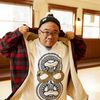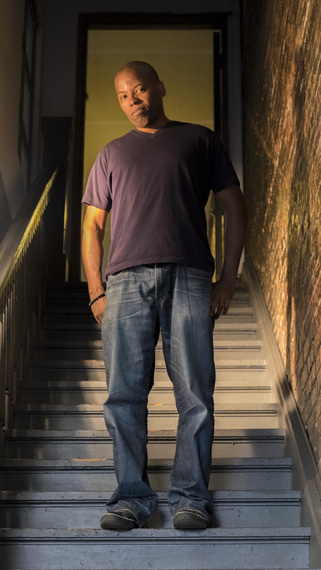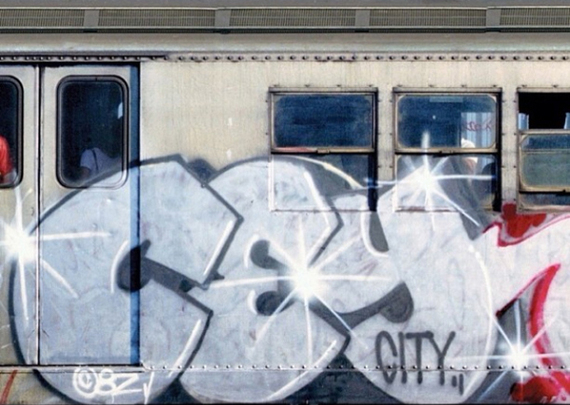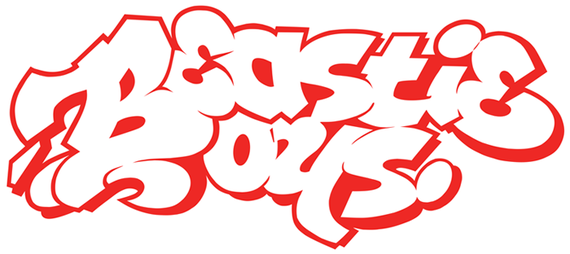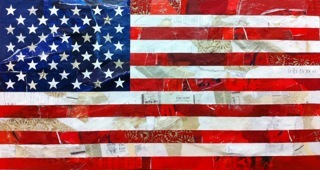It was 1987.
I had just gotten off work and walked across the Kitsap Mall to Sam Goody to look for this album. I heard that it had just got out and I wanted to be the first of my friends to have it. I walked in with money in hand and asked the sales person, "Ya'll got the new Eric B. and Rakim "Paid in Full" out yet?" The sales person didn't say a word and just led me down to the small section of "Rap" they had in the store. There it was. Eric B. (the DJ) holding a stack of money, his gold rings lined out perfectly, His gold chain and Kangol was definitely a sign of the fashion during that time. Standing next to him is Rakim (arguably the best emcee of all time) also holding up a stack of cash, admonished in gold - from the rings, to the bracelets, to the gold on a rope around his neck. Both of them were dressed up in their Gucci. Their status was not to be questioned.
I paid for the CD and gave my head nod to folks on my way out of the mall.
I was proud.
I got home and popped it in my front loading Sanyo CD player. It took a minute to spin and catch the groove of the disc and then;
"It's been a long time, I shouldn't have left you
Without a strong rhyme to step to
Think of how many weak shows you slept through
Time's up, I'm sorry I kept you"
As the music played, I admired the album cover the whole time. It was the best part of getting new music. Pull the "explicit language" sticker. Unwrap the plastic. Place the "explicit language" sticker back on the case. Slice the silver security sticker. Put the CD in the player. Pull out the CD booklet. Press play. Read through the cover. Repeat and enjoy for the first few hours.
That was how we used to experience getting new music back in the day.
Photo Credit: Brad Puet, Seattle, October 2014
Fast forward to October 2014.
The Seattle Interactive Conference was in full swing. One of the speakers this year was Cey Adams. Cey is one of the pioneers in hip hop. He came from the New York streets as a grafitti artist along side some of the most influential artists of that time in Jean-Michel Basquiat and Keith Haring and so many others. He was one of the featured artists in the historic documentary of subway graffiti in New York, Style Wars. He was the creative director of Dej Jam Recordings. He helped define what hip hop albums look like. He was one of the reasons why I loved opening my hip hop CD's. He was one of the reasons why so many of us around the world emulated fashion trends of hip hop.
Cey Adam's not only an artist, he's a historian.
I had the great privilege of interviewing this living legend. Big thanks Cey! Let's see what he had to say!
If you could let the folks know who is Cey Adams? Where are you from?
My name is Cey Adams and I'm a visual artist from New York City. I primarily came of age in the late 70's as a graffiti writer. Back then it was just an outlet for me and my friends to try and express ourselves. As a teenager growing up in New York City back then, the conditions were pretty rough. So as a way to really try and stay out of trouble, graffiti was an escape for me and a lot of other young guys. I never imagined that it would become a lifelong career, you know, but look, here I am.
New York City in the 70's was a different place than it is now. It was not as fancy. In a lot of ways it was survival of the illest. Being a kid though, you really didn't notice that stuff. We'd try different ways to entertain ourselves on a daily basis. I was always an artist, so for me, art was that thing that kept me out of trouble. Even though, I talk about being a graffiti artist, back then a lot of that was centered on vandalism. But in addition to that I was also trying to make a creative statement. It was a way to not only express myself, but to remind people that we are important.
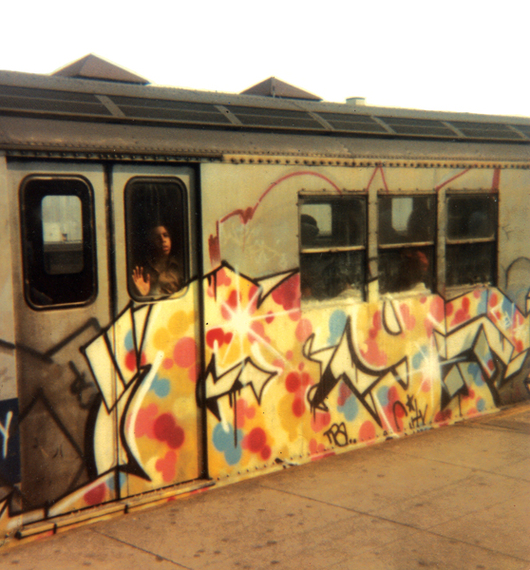
"Cey City" New York City subway train, 1982, Published in DEFinition: The Art and Design of Hip-Hop (2008; c. adams, b. adler; harper-collins)
"Cey City" New York City subway train 1982, Part of full train photo by h. chalfant
You know this, as a writer it's not always easy to find your voice. Well for me, especially back then as a teenager, it wasn't that easy to find our voice. It wasn't that my parents weren't supportive about me being creative, it was more that sometimes they didn't know how to support me being a creative. And the truth is you seek validation from your peers more than anything.
So art and then later graffiti was a way of me really trying to find my voice during a time when no one really wanted to hear or care about what teenagers thought. Back then we didn't have a lot of social services, there weren't any community programs...we really had to figure it out for ourselves. Whether it was using a piece of cardboard to dance, carrying a turntable and a boom box, or a spray can, we did figure it out for ourselves.
So you pretty much came up during the beginning of hip hop as you describe some of these elements of hip hop.
Yeah, I'm first generation. So I came up the same time as Africa Bambaata, Grand Master Flash, Crazy Legs, Frosty Freeze, Keith Haring, Jean-Michel...all the pioneers, you know, they were my friends. Back then we all were starting out at the same point. We were just trying to figure out how we were going to make our art and have our voice heard.
Back then, what were some of the barriers for you and your friends breaking through?
Certainly it had to be: being young, being an artist of color, being inexperienced, lack of education...I mean all kinds of things but you know, I never saw it as a barrier. I always saw it more as being unfortunate. I recognized that some people had more things, so I'd tell myself, I don't have those things but I'm going to figure it out one way or another. I never complained on what we didn't have, I'd just focus on what we did have.
What we had was, freedom.
The best thing about being young, is being young. I mean I know this now but as a teenager I didn't know that. And then as a 20-something, I didn't know that. But I know it now.
So can you remember what brought you out into the limelight? Like what was your first piece that got bought or got your first commission?
My career has been so amazing that I never really look at it that way. It's more like this amazing journey. I was very fortunate to be a part of the East Village Art Movement and to work alongside all these amazing graffiti and visual artists that are too long to mention. There's a laundry list of them. But in addition to that, I was fortunate enough to venture off and focus on graphic design at a time when a lot of my peers were still trying to figure out how to be accepted by the gallery scene. I decided to leave that behind and try something different.
I met a man named, Russell Simmons, in 1983, when he and Rick Rubin were forming Def Jam. Then they gave me the opportunity to learn and become a designer. I didn't know what graphic design was at that time. I just knew that it was a way for me to express myself in a way that was similar to what I was doing as a graffiti artist. I had this lane all to myself. None of my friends were interested in doing what I was doing. It was like I had my own playing field. Granted I had to teach myself what graphic design was and how to do it but I didn't have any competition in the same way a lot of my friends and I did when we were trying to make it as fine artists.
It was a really enlightening thing for me because I got to experiment while I was getting on the job training. Also I was working with, what would then become, some of the most iconic artists of all time.
You know the first things I had done very early on for Russell was when he had a management firm called Rush Artist Management. I did a lot of fliers, posters, and t-shirt designs for bands that he managed like Kurtis Blow, certainly Run DMC, Whodini and it can go on and on. It's staggering.
A lot of that early work was me, really trying to figure out how to communicate the message of the artist in a visual sense. Then really taking the elements I learned on the streets and incorporating that into a visual creation that conveys the energy of the music.
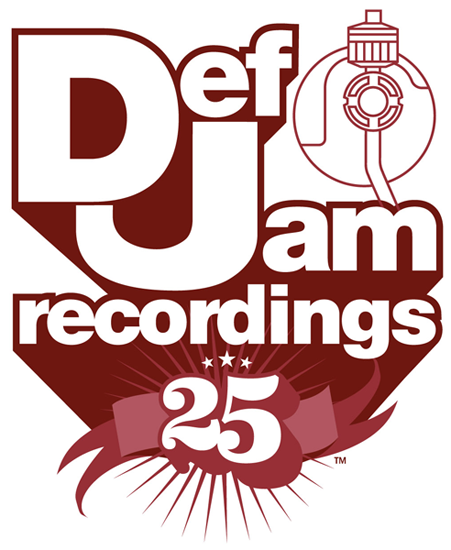
Def Jam Recordings 25th anniversary, Branding for cd box collection and book design published by Rizzoli, 2008
I really do in some ways think of myself as the Jackie Robinson of Hip Hop Graphic Design. When I started there was nobody doing the work in any city. I really had to figure it out for myself and it was really nasty sometimes. You know I'm not going to say that I experienced the kind of racism and bigotry like those before me but it wasn't always easy. Many of the traditional art and creative directors were really mean to me. They didn't give a fuck about the music. And that was the thing that gave me my advantage. They didn't care about me or the music so they didn't pay attention to me. Just stay put and listen to your hip hop records. Then all of a sudden, down came Barbara Streisand and then up came Public Enemy and by then it was too late for them. All of them lost their jobs. All of them.
So did you see an increase in compensation for your work or a value on the type of work that you were doing?
Well you know, back then, what was the budget for a hip hop album? Budget for what? You guys stand in front of brick wall, we don't need a budget for that. My goal was to elevate our art to the same level as rock and roll album covers. They had budgets. I didn't know that it was more than "stand in front of the brick wall, with your hat tipped to the side." But then I realized how many times can you do that with having so many different acts. All these guys were different. I mean, people look at us and think of us like we are all the same but we're all different. So you might be LL, you might be Run DMC, and you might be Beastie Boys and although you might all hang out together, but you have something that makes you all unique. So that's when we decided we had to change it up. We had to change to different perspectives. Shoot in other cities. We had to think about the visuals. And with me being an artist, I always wanted to push the envelope. So one minute I'm working with an illustrator then the next meeting I'm working with a world class photographer and we all knew the importance of making sure we represented the music. We had to make sure that everyone knew that the album cover helped us become as important as their music. They knew when our music and the albums started to sell.
As a legend, as a pioneer, how have you seen your work and the mission of your work evolve?
You know I think that my work today, I still approach it in a very similar way. Even though I'm older, I never stop trying to perfect my craft. In addition to trying to learn how to get better at designing, get better as a painter...I also spend a lot of time trying to educate young people about who we are and where we come from. So today, I see myself more of being a historian. I've been around for such a long time. I've watched the culture blossom from New York City, then to the country, and to all over the whole world. So now I see myself as an ambassador for this culture and I preach the gospel of hip hop.
I'm here to tell the youth that this whole hip hop culture started with us when we were their age. All the possibilities for success are limitless. All you have to do is be passionate. The great thing about hip hop, as it relates to different disciplines, is that nobody can tell you that you cannot participate. Nobody is going to say to you, "Hey you're not qualified to write about this music. You're not qualified to talk about this art." You can do it because, nobody made up the rules. If there were rules designed in hip hop, it was only designed to be broken.
So it's similar to when we came along.
"You can't make music with turntables!"
Screw you, yes I can.
"You can't make art with spray cans!"
Screw you, yes I can.
"You're not a dancer. You don't have formal training. You're just spinning your head on a piece of cardboard!"
Guess what, screw you, yes I can.
That's the best thing about the culture to me. This is what I keep reminding people about hip hop. Hip hop is a timeline. You come into it when you come into it. So I started in the 70's, you may have come in the 90's, somebody else comes along in 2012...so what? As long as you are making a contribution to the history of the culture, you are be a member of the hip hop generation.
So how do you describe the state of hip hop now?
I've always seen hip hop now as being positive because I always see people constantly doing things. You can go to the internet and see amazing things that people are doing in graffiti. They are contributing from the US. They are contributing from Europe. They are contributing in Asia. If you look at the new dance moves that these kids are doing you'll be amazed. They take what the Rock Steady crew did and then take it to a whole new level. You can branch what hip hop has done into so many different areas; film making, fashion, automobile design, and wherever else.
It's amazing that all of this came from a small creative hub in New York City.
So let's say that I'm a young man of color and I've got "two choices" to make in my life, the good and the not so good, what do you say to me?
You know what, I don't think that you need to choose. I don't think it needs to be one thing, or one way. It doesn't need to be, "OK I need to do this or that." As far as young people are concerned, you don't have to make choices. When you're young, the best thing about being young, is BEING young. You can go down one road and try to perfect your craft in one area and if it doesn't work out, you can go down another direction. You don't have to be fearful of trying a bunch of different things.
When I started out, in the early days, I knew that I was going to be an artist. I didn't try to do anything else. These days someone who DJ's, can rap, can dance, can paint...they can do it all. You know what, they might end up becoming doctors or an attorney or whatever it is. The idea that people tell you that you have to make a decision when you're really young is not true and I don't buy into it. People, especially young people, can be anything, be anybody. There are no rules about how to get there.
I'm teaching at the university level and man, I don't even have a college degree. It's just one of those things that people make exceptions for. If you have enough history and you can connect with your audience then that's all that really matters.
You've had a really great history, contributed to the culture in so many ways, what would be one of your proudest moments thus far?
To me, my proudest moment is still being around. I think about a lot of my friends that are no longer here and it makes me sad. So the thing that keeps me going is that I'm a representative for Keith Haring, Jean-Michel Basquiat, Adam Yauch, Iz the Wiz and so many others. I represent those people by still being here and reminding people that we were doing important work.
For instance when people start talking about breakdancing started over here, then I would say, no it didn't Frosty Freeze was the guy who did that first. I'm here to remind them that about the history. Even though some people are more famous than others, they're all really important. That's the best thing about being there firsthand. No one can tell me it isn't so because I saw it with my own two eyes.
I'm proud of being able to stand as an example of what you can do if you really apply yourself and just believe in what you're doing.
